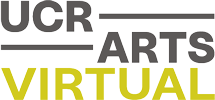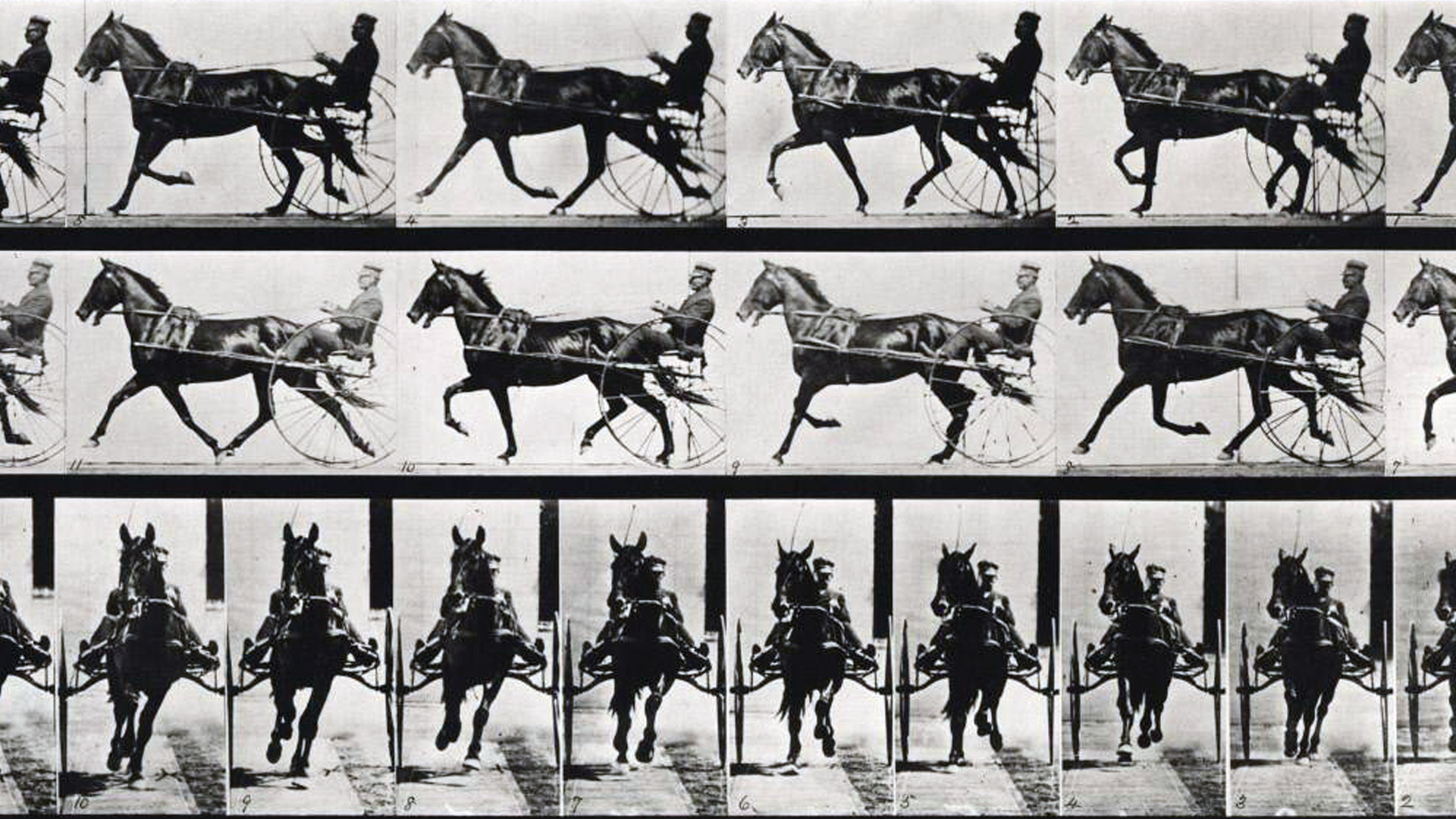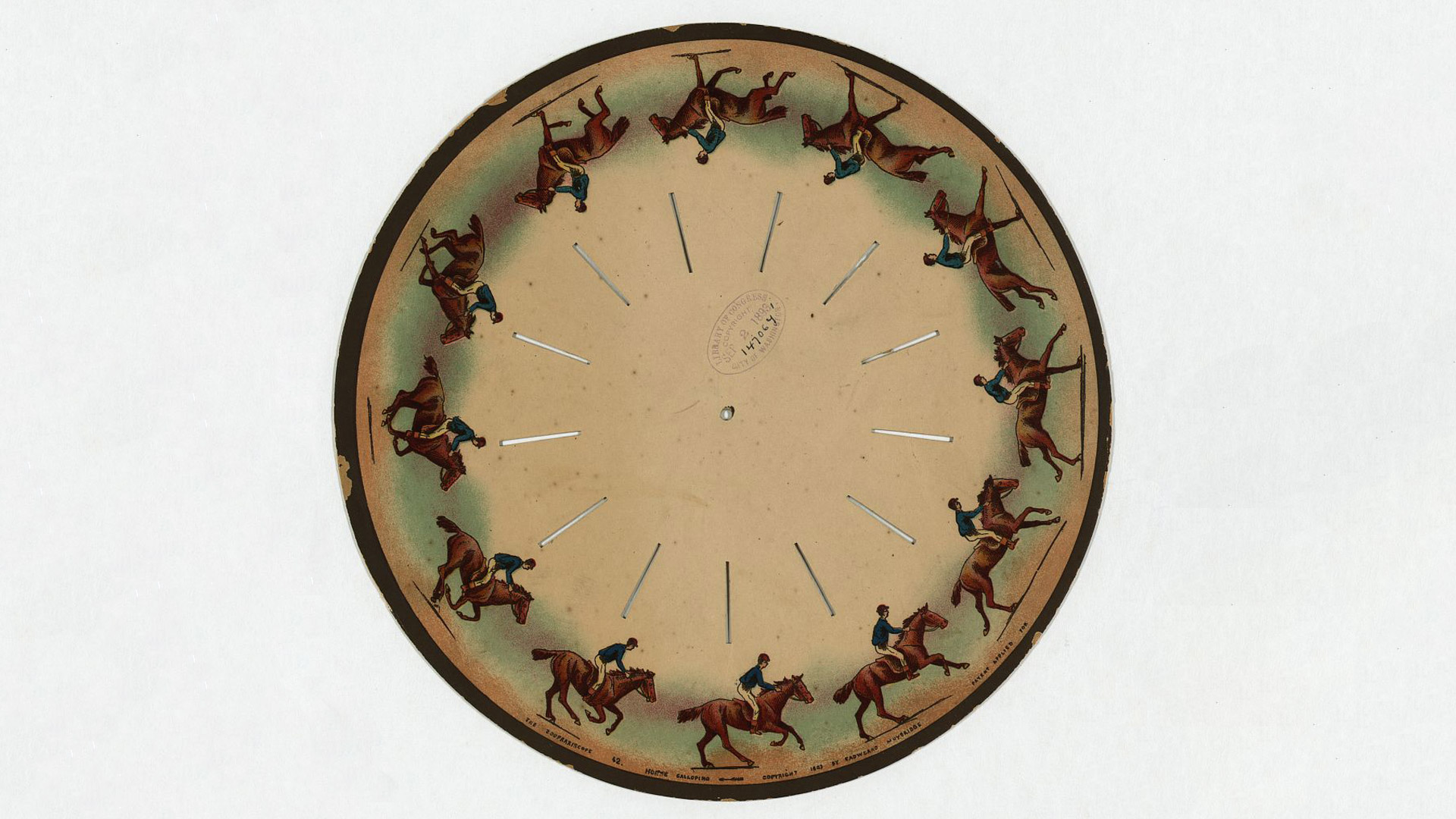In this series we are learning about the history of photography together and doing activities that help us understand early photography. Today we’re going to talk about something that pretty much everyone likes – movies! We’re going to learn about the photographer who created the first motion picture, a man named Eadweard Muybridge. Then you are going to create your own motion pictures using two different methods – the flipbook and stop motion.
En esta serie aprenderemos juntos sobre la historia de la fotografía y realizaremos actividades que nos ayuden a entender los comienzos de la fotografía. Hoy vamos a hablar de algo que les gusta a casi todos—¡las películas! Vamos a aprender sobre el fotógrafo que creó la primera película, su nombre era Eadweard Muybridge. Luego crearás tu propia película usando dos métodos diferentes – el flipbook (o libro animado) y la animación cuadro por cuadro.
Eadweard Muybridge was a photographer who first became famous for his photographs of American landmarks, like Yosemite Valley. He actually ended up taking the photographs that led to the first motion picture because of a bet.
A man named Leland Stanford, who owned race horses, had a bet with other businessmen that all four of a horse’s hooves came off the ground at once when galloping. The other men thought that at least one hoof was on the ground at all times. Stanford hired Muybridge to photograph a horse while galloping to prove his hypothesis. His idea was a hypothesis because it was an educated guess that still had to be proven.
Muybridge’s experiment was to set up 12 cameras along a race track. There were wires strung across the race track that were attached to each camera. When the horse ran through each wire, the corresponding camera took a picture. This meant that he would have a picture of each phase of the horse’s movement. Stanford invited the businessmen as well as the press to watch Muybridge’s experiment in action. And it worked! Not only did Muybridge prove that the horse’s hooves came completely off the ground at the same time when galloping, but he also created the first photographs of motion.
Later, Muybridge invented a device, called a zoopraxiscope, to turn the still photographs into a motion picture. He did this by transferred the images onto a glass disc. The images were then projected from the disc onto a surface. When the disc was spun, it showed the images in rapid succession, therefore creating a motion picture.
Muybridge became obsessed with these photos of motion, called chronophotography, and used this method to capture different animals and humans in motion. These photographs were very helpful to both artists and scientists who wanted to study human and animal bodies in motion. His discoveries eventually led to the invention of motion pictures, or movies, that we watch today!
Now that you’ve learned how the first motion picture was created, you can make your own. The first way we are going to do this is with a flipbook. Here is a flipbook of Muybridge’s photographs. For a flipbook all you will is need several notecards or you can cut up small pieces of cardstock, a binder clip, and a pencil. First, decide what you want your motion picture to be about. A cat walking? A flower growing? A car racing? Mine is going to be a fish jumping. For the first piece of paper, draw the first thing you would see in that motion. For each page after that, draw the next phase in that motion. The smaller the movements and the more pieces of paper, the longer and more realistic your motion picture will be.
Here’s mine!
For your second motion picture, we are going to create a stop motion video. For this you will need some sort of moldable clay, a surface, and a phone or tablet with a camera and stop motion app. There are a lot of free and inexpensive stop motion apps you or an adult can download. Again, decide what you want your motion picture to be about. My son and I decided to create one about an octopus eating a taco. I made the octopus and he made the taco. Then we broke down each motion by moving the clay slowly and taking a picture after each movement. At the end we uploaded the pictures to a stop motion app which created the video. Here’s our Octopus Eating a Taco movie.
Just like Muybridge, you guys made motion pictures by creating still images and then animating them! If you post your videos on social media be sure to tag us at UCR ARTS! Thanks for joining me and stay tuned for our next video!
Eadweard Muybridge era un fotógrafo que se hizo famoso por sus fotografías de reconocidos paisajes estadounidenses, como el Valle de Yosemite. Muybridge fue quien tomó las fotografías que terminaron convirtiéndose en la primera película y todo debido a una apuesta.
Un hombre llamado Leland Stanford, quien era dueño de caballos, hizo una apuesta con otro hombre de negocios argumentando que los cuatro cascos de un caballo se levantaban del suelo todos al mismo tiempo cuando estos galopaban. Los otros hombres pensaban que al menos uno de los cascos siempre tocaba el suelo. Stanford contrató a Muybridge para que fotografiara a un caballo mientras galopaba para probar su hipótesis. Su idea era una hipótesis porque era sólo una suposición bien fundada que aún debía probarse.
El experimento de Muybridge consistió en ubicar 12 cámaras a lo largo de una pista de carreras. Había cables colgados a lo largo de la pista que estaban fijados a cada cámara. Cuando el caballo cruzaba cada cable, la cámara correspondiente tomaba una fotografía. Esto quería decir que como resultado obtendría una fotografía de cada etapa del movimiento del caballo. Stanford invitó a los hombres de negocios y también a la prensa a observar el experimento de Muybridge en acción. ¡Y funcionó! Muybridge no sólo probó que los cascos del caballo se elevan completamente del suelo todos al mismo tiempo cuando éste galopa, sino que también creó las primeras fotografías de movimiento.
Más tarde, Muybridge inventó un dispositivo, llamado zoopraxiscopio, que convertía a las fotografías en películas. Lo hacía transfiriendo las imágenes a un disco de vidrio. Luego, las imágenes se proyectaban desde el disco a una superficie. Cuando el disco se hacía girar, mostraba las imágenes en una sucesión rápida, creando como resultado una película.
Muybridge se obsesionó con estas fotografías de movimiento, llamadas cronofotografía, y usó este método para capturar a diferentes animales y personas en movimiento. Estas fotografías fueron de mucha ayuda para artistas y científicos que querían estudiar los cuerpos de los seres humanos y los animales en movimiento. ¡Eventualmente sus descubrimientos llevaron a la invención de las películas que vemos hoy en día!
Ya que has aprendido cómo fue creada la primera película, ahora puedes hacer la tuya propia. Primero lo vamos a hacer con un flipbook (o libro animado). Aquí hay un flipbook de las fotografías de Muybridge. Para hacer un flipbook todo lo que necesitarás son varias tarjetas de apuntes, también puedes cortar pequeños trozos de cartulina, un clip para carpetas y un lápiz. Primero, debes decidir el tema de tu película. ¿Un gato caminando? ¿Una flor que crece? ¿Un carro de carreras? La mía va a ser sobre peces saltando. Para la primera hoja, dibuja lo primero que se verá del movimiento. En cada hoja que sigue, dibuja la siguiente etapa del movimiento. Mientras más pequeños los movimientos y más hojas de papel, más larga y más realista será tu película.
¡Aquí está la mía!
Para tu segunda película, vamos a crear un video de fotograma. Para esto necesitarás arcilla moldeable, una superficie y un teléfono o tablet con una cámara y una app para fotogramas. Hay muchas apps gratis para hacer fotogramas o algunas muy baratas que tú o un adulto pueden bajar. Nuevamente, decide el tema de la película. Mi hijo y yo decidimos crear uno sobre un pulpo comiendo un taco. Yo hice el pulpo y él hizo el taco. Luego dividimos cada movimiento moviendo la arcilla lentamente y tomando fotografías después de cada movimiento. Al final subimos las fotografías a una app para fotogramas y creamos el video. Aquí está nuestra película sobre un pulpo comiendo un taco.
¡Al igual que Muybridge, ustedes hicieron películas creando imágenes y luego animándolas! ¡Si suben sus videos en las redes sociales asegúrense de etiquetarnos a UCR ARTS! ¡Gracias por acompañarme y espera nuestro próximo video!


